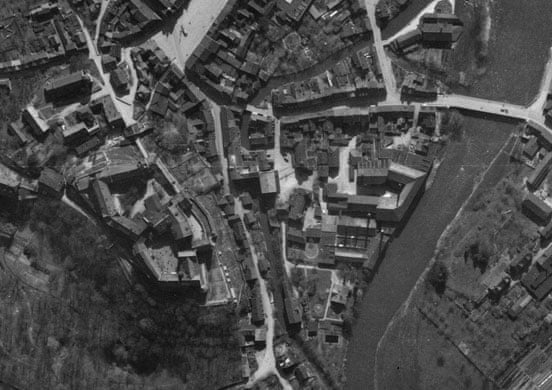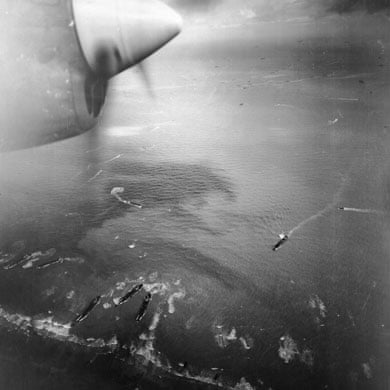
The 107th Fighter Squadron played an important role in World War II from 1942-1945 by doing several jobs in the air that allowed the US and allied nations to win the Second World War. It is interesting to understand what exactly they did and how what they did lead to a victory for the US as well as their squadron being awarded the Distinguished Unit Citation (Maurer, 336-337).
Overview
The 107th Fighter Squadron of the Michigan Air National Guard was started in 1917, better known as the 107th Aero Squadron. This squadron took part in a number of wars, including both world wars. Though the focus will be its large role in World War II, it is important to note that this squadron went through numerous name changes throughout its career, settling as the 107th Fighter Squadron. Some of the names the squadron was recognized by were: 107th Observation Squadron, 107th Reconnaissance Squadron, and 107th Tactical Reconnaissance Squadron. The United States used the 107th Fighter Squadron in several campaigns during the Second World War. The campaigns they were involved in include but are not limited to: Antisubmarine, Air Offensive, and Operation OVERLORD (Maurer, 336-337).
Anti-Submarine Patrol
In May 1943, the 67th Observation Group became the 67th Reconnaissance Group, a group of several squadrons, including the 107th Reconnaissance Squadron, that started off doing antisubmarine patrol in World War II. In the early stages of this, they would patrol the US coast, using visual lookouts to spot submarines. This was essential to the United States because the German forces would use their U boats (submarines) to destroy American boats in order to prevent war equipment and food being supplied to the troops in Britain (powerpoint). They eventually expanded their patrolling routes to cover both the European Theater and the threats from Japanese submarines (Pike). In Air Strength of the United States, Elton Fay wrote “With war in two hemispheres, critically needed equipment and manpower had to be distributed quickly,” (Fay). With that being said, the antisubmarine patrol was very important due to the high demands of resources being distributed to the war that was fought in Europe and near Japan. Without the 107th Reconnaissance Group’s involvement in scouting out submarines, many ships that carried vital supplies could have been compromised by the constant German U-boat harassment.

Air Offensive

In August 1942, the 107th Tactical Reconnaissance Squadron was moved to England to be a part of the Air Offensive in the European Theater. Air offensive duties performed were: Artillery spotting, bomb damage assessment, photographic reconnaissance, and visual reconnaissance. By spotting where artillery was, the United States were able to use bomber squadrons to take out artillery in order to provide safe support to troops that would be affected by the artillery shells that got fired at them. James Houston wrote, “A German soldier wrote in a letter in December 1944: The artillery observers destroy our positions. Here our artillery is shooting a little more, but the answer always comes, and in much greater quantities. We all would be very happy to see a few of our fighter planes which could bring an end to the steuren which we call the artillery observers. Without any interference these dogs fly around all day in our sky. Against that one can only hid like a little mouse and do the rest at night” (Huston). The 107th Squadron’s involvement in artillery spotting was clearly successful according to a German soldier. Constantly they were roaming the sky finding artillery positions and made them almost irrelevant by relaying that information to bombers. The US shifted to more strategic bombing, where they would target infrastructure that would cripple the German industrial involvement in the war. This is where bomb damage assessment came in. For example, Figures 2 and 3 are “Air photos graphically depict[ed] the destruction of the abbey of Monte Cassino in southwestern Italy. Monte Cassino was the target of several concentrated Allied airstrikes and assaults in the early months of 1944 (Military). Though these images aren’t specified to which unit that took them, this is a great example of the work that the 107th Squadron did. By observing the damage done, the US knew whether their bombings were successful and knew where to strike next. According to the National Guard, “In December 1943, the 107th became the first operational photographic reconnaissance squadron in Northern Europe” (Home). That is a pretty big deal and the 107th Squadron didn’t disappoint. Thousands of images were taken throughout the War. Photographic and visual reconnaissance was performed to help support the fighting units directly (Rickard). The squadron took images of German bases, German troops, German research sites, potential routes, rivers, and coastlines. Figure 3 is an image of “Colditz Castle in Saxony, Germany, on 10 April 1945 just three days before US forces overran the area” (Secret). Photographic reconnaissance allowed the US to understand specific targets and troops and optimal ways to send troops in to minimize casualties and maximize their efforts. With this reconnaissance, operations could be performed on foreign territory with great success. To emphasize their importance and convenience, Tactical Use of Air Power in World War II: The Army Experience said, “Ground soldiers came to attach an almost phenomenal importance to the little spotter planes, and insisted on having them aloft almost continuously” (Huston). 107th’s continuous reconnaissance not only was very successful in the war efforts physically but also boosted morale in the ground troops. Ground soldiers clearly felt much better protected and aware by having eyes in the sky 24/7.

Operation OVERLORD

The 107th Tactical Reconnaissance Squadron is best known for its involvement in Operation OVERLORD, better known as the Normandy Campaign. For D-Day, they played two separate roles. The first role was the preparation for the attack. They flew along the France coastline and provided photographic reconnaissance of the area. Specifically, they “provided more than 9,000 intelligence photos to the Allied High Command in the weeks before D-Day (2018). Between February and March of 1944, the 67th Reconnaissance Group photographed 160 miles of French coastline through low altitude flights (Rickard). This allowed the US to get a full understanding of the coast of France and the German defenses, which would in turn allow them to devise a plan for how their ground and naval troops would work in order to succeed in their campaign. In fact, the 107th Squadron received the Presidential Unit Citation for their role in preparation for D-Day (Home). In “Michigan National Guard in World War II,” “The squadron’s pilots flew 384 missions to perform the dangerous task of photographically mapping the French coast before D-Day. Miraculously, only one aircraft was shot down from December 1943 to June 1944” (Michigan). This is how successful they were in their missions, as well as why they were so deserving of their Citation. Figure 4 is an image “taken on D-Day, 6 June 1944, of the Allied invasion” (guardian). This is the result that the 107th Squadron made possible by its detailed mapping of the area. The second part of the Normandy Campaign for the squadron was supporting the US First Army. To add to their list, “…the 107th was the first reconnaissance unit to operate from French soil. They played their eyes in the sky role during the invasion, providing visual support for the ground troops and naval guns off the coast. Their visual support helped guide ground troops throughout the battle. For the naval guns, they directed the fire of them to perform proper artillery fire (USAAF).
Conclusion
Antisubmarine patrol, Air Offensive, and the Normandy Campaign are a few tasks that the 107th Tactical Reconnaissance Squadron tackled during their involvement in the Second World War. Initially starting their journey on August 21, 1941, they provided great efforts towards the war until March 31, 1946, when they were inactivated (14 January 2015). From patrolling the US coast for German U-boats to playing a major role before and during D-Day, they had a near perfect success rate in their missions of reconnaissance. Because of this, they received the Presidential Unit Citation as well as several firsts for the US Air Force. On June 6, 2018, the “Red Devils have performed reconnaissance over the beaches of Normandy, France, and reported that today, freedom reigns” (Leone).
Primary Sources
- “Military Reconnaissance – Looking at Earth: National Air and Space Museum.” Military Reconnaissance – Looking at Earth | National Air and Space Museum, Smithsonian National Air and Space Museum, https://airandspace.si.edu.
- “Rhine to Victory; a Photo History of Ninth Air Force Operations during the Final Phase of the War in Europe.” Home, 1 Jan. 1970, https://www.loc.gov/
- “Secret Second World War Aerial Images Go Online.” The Guardian, Guardian News and Media, 23 Nov. 2009, https://www.theguardian.com
Secondary Sources
- Fay, Elton C. “Air Strength of the United States.” The Annals of the American Academy of Political and Social Science, vol. 299, 1955, pp. 30–37. JSTOR, http://www.jstor.org
- Heaton, Daniel. “107th Returns to Normandy.” DVIDS, 127th Wing Public Affairs, 3 June 2018, https://www.dvidshub.net.
- “Home.” National Guard, https://www.nationalguard.mil
- Huston, James A. “Tactical Use of Air Power in World War II: The Army Experience.” Military Affairs, vol. 14, no. 4, 1950, pp. 166–185. JSTOR, http://www.jstor.org/
- Leone, Dario. “107th Fighter Squadron Returns to Normandy after 74 Years to Commemorate the D-Day Invasion.” The Aviation Geek Club, 5 June 2018, https://theaviationgeekclub.com
- Maurer, Maurer. “Combat Squadrons of the Air Force, World War II.” Jan. 1982, doi:10.21236/ada128026 .
- Pike, John. “Air Anti-Submarine Warfare.” Air Anti-Submarine Warfare – Military Aircraft, 14 Mar. 1999, https://fas.org
- Rickard, J (14 January 2015), 67th Reconnaissance Group (USAAF), http://www.historyofwar.org

